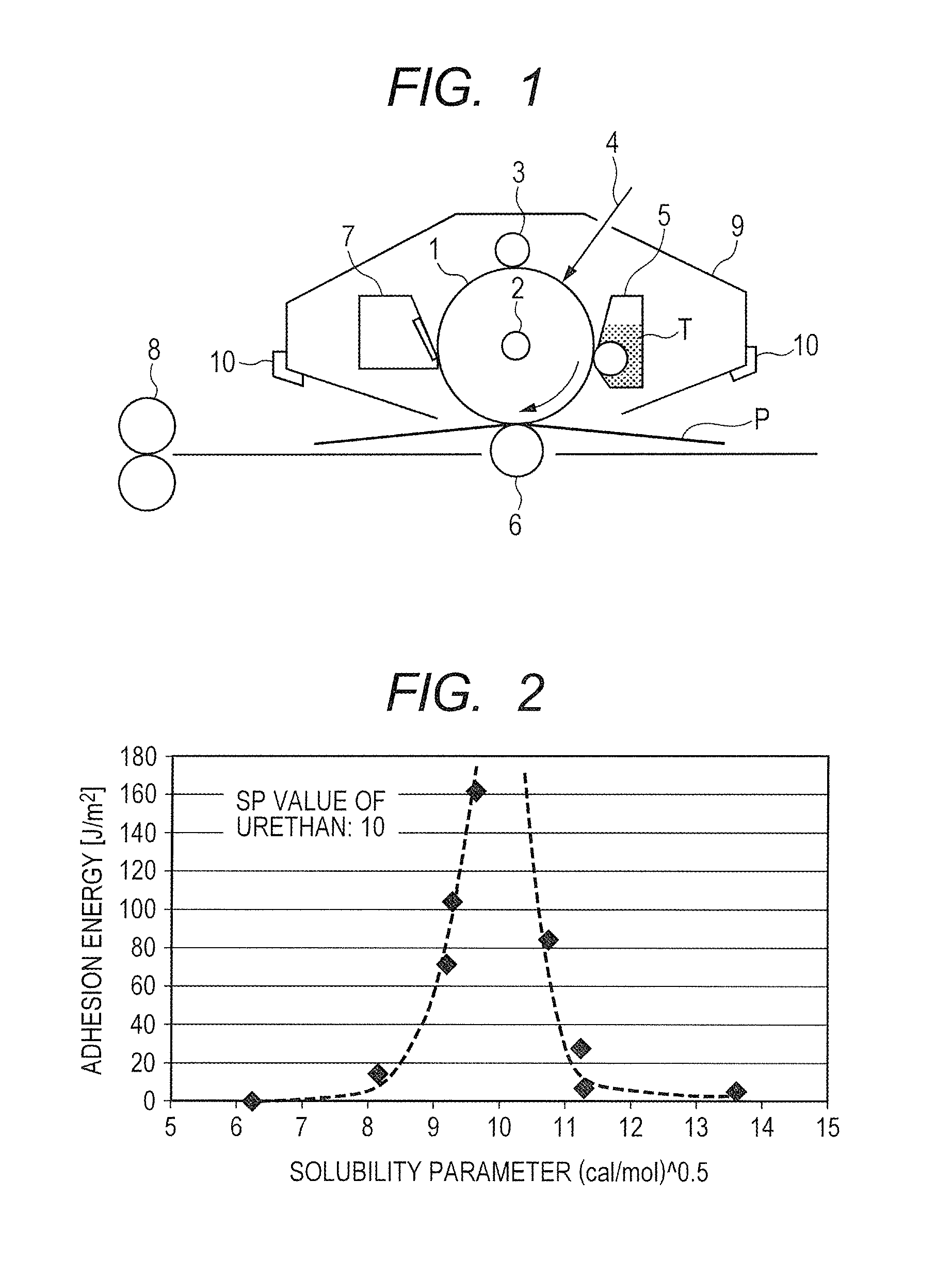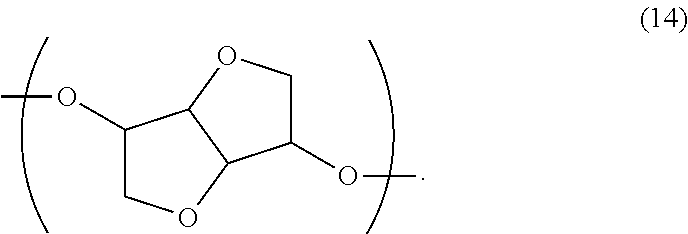Image forming method, process cartridge and electrophotographic apparatus
- Summary
- Abstract
- Description
- Claims
- Application Information
AI Technical Summary
Benefits of technology
Problems solved by technology
Method used
Image
Examples
production examples 2 to 4
of Resin C
[0305]Each resin C was produced in the same way as in Production Example 1 of resin C except that the amounts of the acid components and the alcohol components added were changed as described in Table 1. The obtained resins C were designated as resins C2 to C4.
TABLE 1Resin C1Resin C2Resin C3Resin C4MonomerAcidTPA45.0045.2045.2045.20composition*IPA44.2044.0044.1044.10(molar ratio)TMA1.301.301.301.30AlcoholBPA(PO)64.0022.0068.5079.00(total = 100)BPA(EO)16.0023.0031.4020.40Isosorbide20.0055.000.100.60Isosorbide unit mol %10.5028.870.050.31Acid value of resin7.06.86.57.2*Monomer composition is indicated by molar ratio when the total mole number of the alcohol components is defined as 100.TPA: terephthalic acidIPA: isophthalic acidTMA: trimellitic acidBPA(PO): adduct of bisphenol A with 3 mol propylene oxideBPA(EO): adduct of bisphenol A with 2 mol ethylene oxide
Production Example 1 of Toner
[0306]Toner 1 was produced according to the following procedures.
[0307]850 parts by mass...
production examples 2 and 3
of Toner
[0314]Each toner was produced in the same way as in Production Example 1 of toner except that the amount of resin C added and the type thereof were as described in Table 2 in Production Example 1 of toner. The obtained toners were designated as toner 2 and toner 3.
[0315]As a result of analyzing the surface composition of the toner 2 and the toner 3 using TOF-SIMS, a fragment derived from the isosorbide unit was confirmed to exist thereon. Accordingly, the toner 2 and the toner 3 were found to have a state where the isosorbide unit was exposed on the surface.
production example 4
of Toner
[0316]Toner was produced by the dissolution suspension method according to the following procedures.
[0317]First, an aqueous medium and a solution were prepared according to the following procedures to prepare toner.
[0318]660 parts by mass of water and 25 parts by mass of an aqueous solution containing 48.5 mass % of sodium dodecyl diphenyl ether disulfonate were mixed and stirred, and stirred at 10000 r / min using a TK homomixer (manufactured by PRIMIX Corp.) to prepare an aqueous medium
[0319]The following materials were added to 500 parts by mass of ethyl acetate and dissolved therein at 100 r / min using a propeller-driven stirring apparatus to prepare a solution.
Styrene-n-butyl acrylate copolymer100.0 parts by mass (copolymerization mass ratio: styrene / n-butylacrylate = 75 / 25, Mp = 17000)Resin C13.8 parts by massC.I. Pigment Blue 15:36.5 parts by massHydrocarbon wax9.0 parts by mass(peak temperature of the largest endothermicpeak: 77° C., HNP-51, manufactured by NipponSeiro ...
PUM
| Property | Measurement | Unit |
|---|---|---|
| Percent by mass | aaaaa | aaaaa |
| Percent by mass | aaaaa | aaaaa |
| Percent by mass | aaaaa | aaaaa |
Abstract
Description
Claims
Application Information
 Login to View More
Login to View More - R&D
- Intellectual Property
- Life Sciences
- Materials
- Tech Scout
- Unparalleled Data Quality
- Higher Quality Content
- 60% Fewer Hallucinations
Browse by: Latest US Patents, China's latest patents, Technical Efficacy Thesaurus, Application Domain, Technology Topic, Popular Technical Reports.
© 2025 PatSnap. All rights reserved.Legal|Privacy policy|Modern Slavery Act Transparency Statement|Sitemap|About US| Contact US: help@patsnap.com



